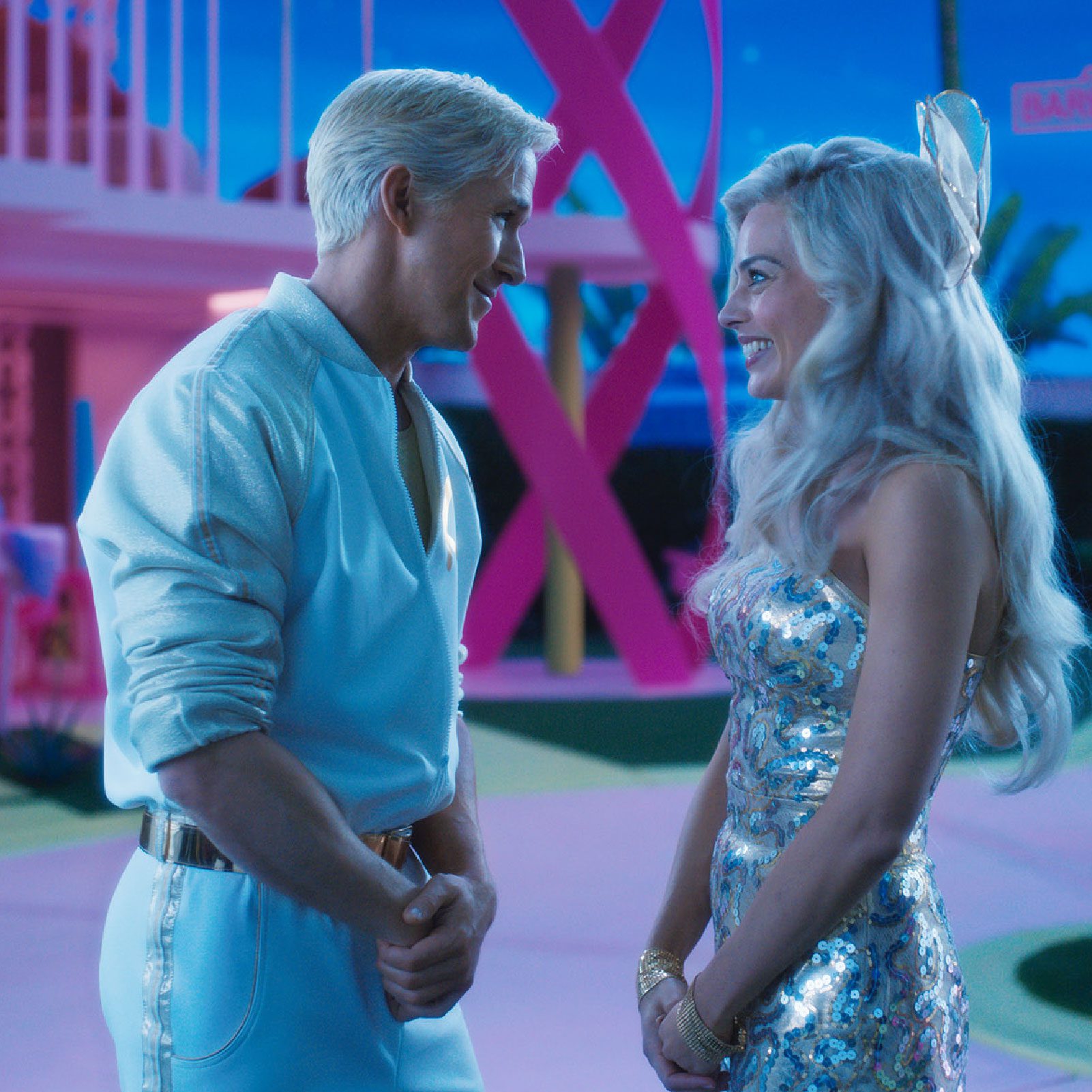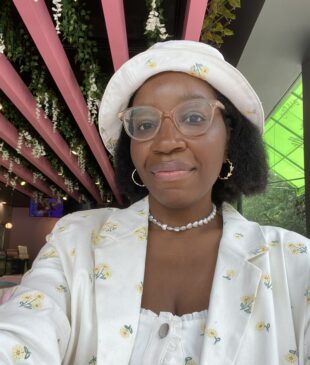As the lead hair and makeup designer for Greta Gerwig’s highly-anticipated Barbie film, Ivana Primorac was tasked with a seemingly impossible challenge: she had to transform Margot Robbie and Ryan Gosling into Barbie and Ken — the world’s most famous and iconic doll couple — along with the rest of the film’s star-studded cast, and do so in a way that still felt fresh yet familiar. The veteran stylist, who’s been nominated for her work on films such as Anna Karenina, Atonement, and Sweeney Todd, approached the hairstyling for the movie, which is out today, with impeccable attention to detail and a honed understanding of what the beloved doll represents. The result? A multitude of dazzling, custom hairstyles that are pretty much everything your 5-year-old self (and your adult self) could ever dream of — from perky high ponytails with corkscrew curled bangs and chunky, oversized braids adorned with bows to fluorescent blue mermaid waves and gorgeous curls of all shapes and textures.
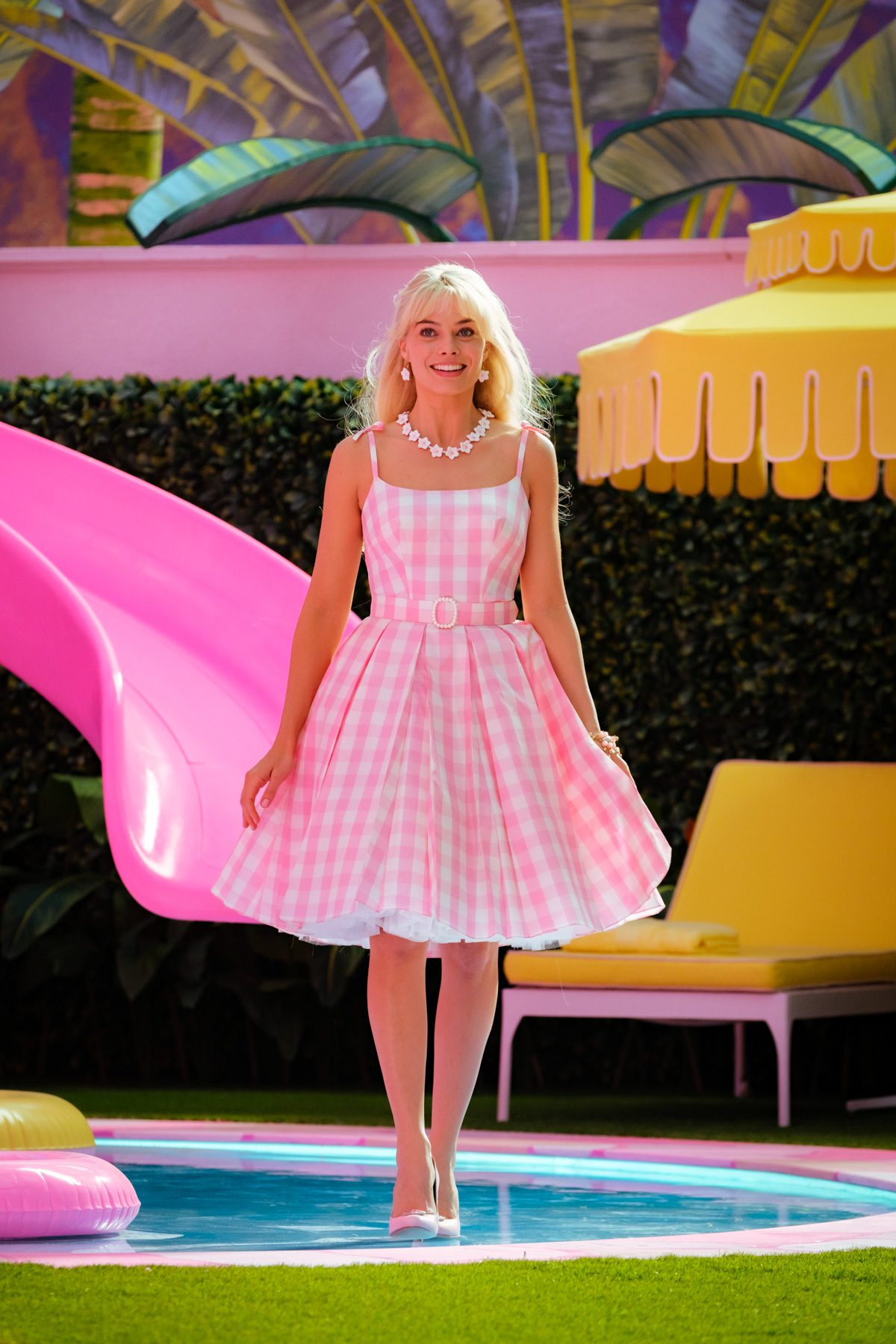
The Tease had the pleasure of chatting with Primorac, after seeing an early screening of the film, and we got all of the behind-the-scenes details about the hairstyling as well as what it really takes to become a Barbie girl (or just a Ken) in a Barbie world. Here, she shares the realities of bringing the popular doll’s hair to life, including how she chose the perfect shade of blonde for Robbie’s Barbie and Gosling’s Ken, the story behind Kate McKinnon’s choppy “Weird Barbie” haircut, and why she individually designed each character’s look to convey the best version of themself.
The Tease: For a film of this magnitude, what sort of discussions were you having with director Greta Gerwig early on about how the hair should look? And in these early conversations, what challenges presented themselves with regards to the hair?
Ivana Primorac: We started having meetings every Tuesday about six months before we actually all met in London, in pre-production, and it would always be Greta, costume designer Jacqueline Durran, production designer Sarah Greenwood, and me. We would talk about the scale. We would talk about the environment. We would talk about the dolls and usually what we didn’t want them to be. We kind of knew what we didn’t want them to be. They had to clearly be dolls and they had to be Barbie and Mattel dolls, but they had to be totally relatable too. So that was the tricky part.
In those very early conversations, we discussed different hair, different kinds of possible shine and fibers, and we discussed the skin quality, that would be clearly plasticky. I had some really great ideas on all those fronts and because we had time, it was worth exploring a prototype for all those kinds of things. So a lot of plastic hair arrived and we tried some really amazing, strange makeup that was found all around the world—from all corners of the world. We tried it all on and it was very apparent, very quickly, that was not what’s beautiful. Every single girl in her mind thinks that her Barbie is the most glamorous, beautiful thing in the world. Plastic hair and some weird kind of skin is never going to be that. That’s when we realized that Barbie is the best version of herself — of oneself. We had to find what is the best version of each person, of each actor, and make that happen.
So the scale became something that’s very, very important and that was why it was important to kind of have these conversations with Sarah and Jacqueline because very quickly looking at their designs of the Dreamhouse and the world that we were going to be immersed in and the Barbie car, you realize that Barbie never quite fit perfectly in her car. You kind of have to jam her into the car because the legs don’t bend. And her ceiling is always a bit too low. The scale of everything is wrong and that’s what made the world fun.
But for me, I realized that I have to make every Barbie have the best skin that suits that Barbie. There is no skin color that I needed to achieve. The tan is not a thing because not everyone looks brilliant in a tan. So it was very clear that everyone had to have the best skin and radiant, not thickened makeup. And it reminded me of the best version of people, young people, when they go to festivals and when they’re out in the world having the best time. Or those glamorous ‘40s films and Grace Kelly films and all those incredibly beautiful movie stars. They don’t necessarily look so glamorous, but it’s their simplicity in the whole thing.
So that’s what I decided it had to be very quickly. We were like, no plastic hair and no strange, plastic makeup — it has to be the best version. But the hair had to be wider than their shoulders and every Barbie’s hair is longer than it should be or wider than it should be, and that had to kind of happen with every costume. We would decide what is the best length so that the legs would look the longest and the limbs look glamorous. Every Barbie should be like a ballerina and looks so glamorous and the hair should just be simple and glorious. So once we all met in London, in pre-production, that’s where we were at, at that point. We knew that we just had to make every Barbie individually designed.
You obviously had the Barbie dolls as reference points, but where else did you look for visual inspiration when designing the hair looks for the film?
Primorac: We had access to the Mattel archive and as we were prepping, I was acquiring more and more books on all the Barbies that they ever built or made. I found some incredible books and references from all the Barbies — vintage Barbies — that were ever produced, from the first ones ever made. And that’s really where you can see all the different jobs and all the different professions. It was extensive research, similar to [that of] any period or historical show. That became fun and then Greta brought in the role of professional Barbies, which were identical to the dolls, and then Peaches ‘N Cream Barbie and all those other dolls which existed. And then we did some discontinued dolls like Midge and all those. They were fun to do because we tried to replicate them identically. And then Totally Hair Barbie, I didn’t really know that she existed. I found her and then, of course, Greta said that we had to do one of those. I was like, how are we going to do hair down to the ground? So we did that too.
With Margot’s Barbie, Jacqueline drew a lot of the inspiration from existing Barbies and existing designs. She completely remade them into their own designs that would suit Margot’s Barbie best and then they became kind of a lovely, beautiful costume to wear. Very early on, we sat down on the sofa in her room and we went through scene-by-scene, going over ideas and fabrics for the costumes and the hair that would go with them. Margot and Greta had already spoken about the influences that Greta had from all the different movies that inspired her, so there were little kind of designs and messages and kind of lookalikes of those films as well. So we pieced the whole thing together like that. We kind of planned all of her different looks together. We had to sit down and decide why she would have certain looks and what would look the best. And then we had all of the little vignettes at the very beginning of the film where she has long hair and short hair — that was just so much fun. She was in, I think, 12 different looks before the credits stopped rolling, so we had to do it all together.
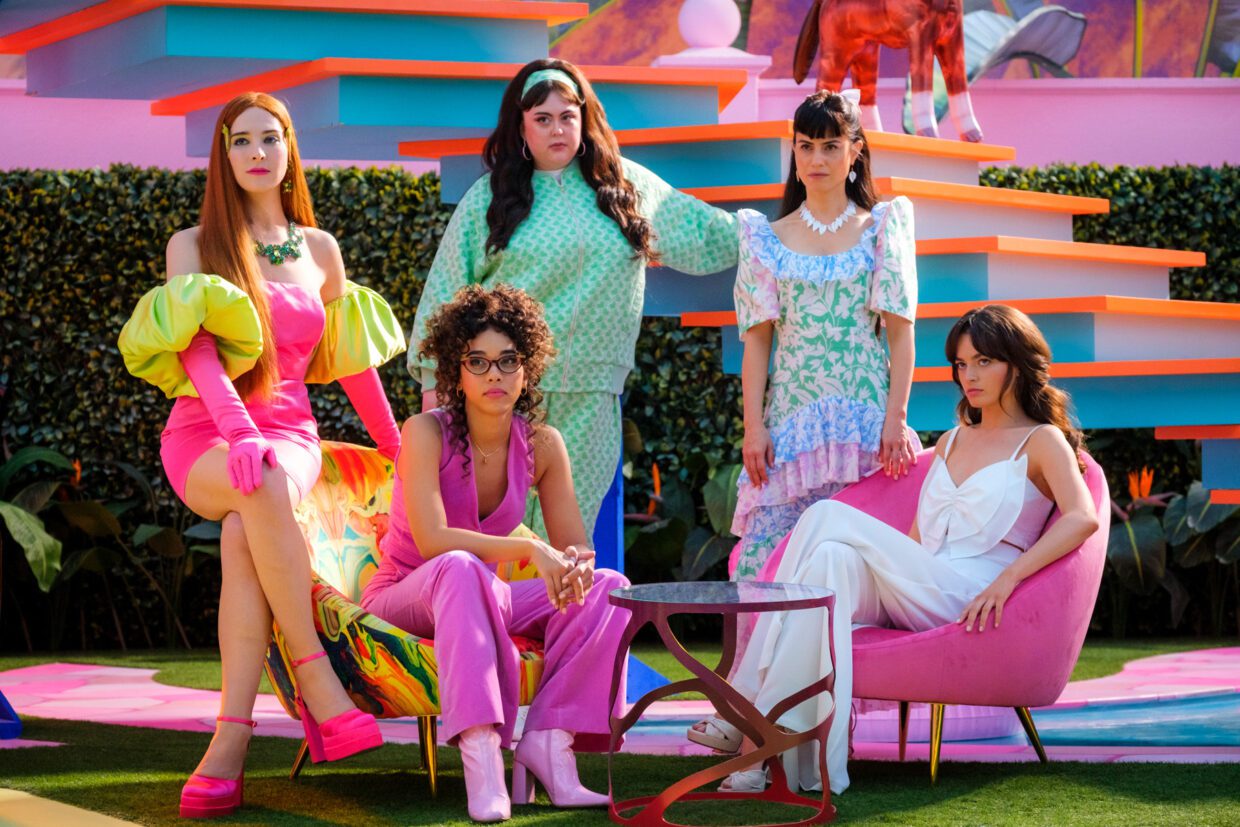
Can you describe the challenges of trying to reimagine doll hair, which has a tendency to be unattainably perfect, for humans with this film? I imagine that it must have been difficult, especially doing so for so many different types of Barbies.
Primorac: But it was also great fun because I could approach every actor as a blank canvas and we could decide together on all those issues. We had so many accessories and ribbons because nothing is too much for a Barbie, but it had to all look tasteful and fun and lovely because in our minds, in a child’s mind, that’s what they are. So it was fun to study.
The volume of everything was a little bit scary and we were making and designing all the way through the film. We were never quite ready. It kept going and kept going and kept sort of rolling until we finally stopped at the end. But once we knew what it was, it became creative and fun. And we could just make sure that everyone had everything they needed. With every outfit, it had to be a completely new design of hair and everything. I wanted every person, every actor, to decide what their hair would be like. Everyone had their individual looks and individual kind of trademark — whatever they decided. And we kind of said that there was never going to be two Barbies that were the same.
Speaking of the Barbies’ individual looks, Kate McKinnon has said that she was very involved in creating her “Weird Barbie” look. How did you both eventually land on the choppy haircut that she sports in the film?
Primorac: Every single actor participated in their looks — absolutely, every single one. And what was great fun is that once we sat down and started the process, I would explain to them what we found, and that is what the rules are, which is that the hair has to be a little bit longer and a little bit wider. Or, if you have short hair, there has to be something about it that should be doll-like. Once we agreed on that, every actor could actually have their input. And I really did follow all of their ideas and that was great fun.
With Kate’s character, it was so hard and I didn’t think it was going to be so hard. The reason being is that everything we did and everything we tried looked like something else. It would be too punk or too fashion or too real person that you saw walking down the street or from someone’s catalog. When you think of how many creative looks that have been in fashion over the years, it couldn’t be any of that because this was a doll that was “played too hard with.” And I loved the description in the script — someone played with her “too hard.” So it was really hard.
Kate came two or three times from the States to do more fittings. She was amazing and gave us a lot of time, which was wonderful. And we were never pleased until we found the version that we did with the choppy hair. I loved it in the end because it had to look like a kid chopped into it, which is quite hard because [the hair] had to be much thicker than normal. It had to be in sections. You can’t really chop an ordinary head of hair to look like that. So we learned that and then we just also drew a lot of the stained chalk in different colors to make it look kind of kid-like.
The makeup was just really difficult because everything looked too much and too sophisticated in lots of ways and we knew that we had to find something that was spontaneous and that was childlike. And that was way harder than I ever thought. I was also really worried about how can you kind of watch her play those incredible scenes and just look at that makeup in every scene and every shot. I didn’t want it to be distracting and I’m very pleased in the end, [because] I kind of forgot about it very quickly.
It was a laborious process and we knew that we were never pleased with anything before so we kept going. In the end, we knew that we could define what was wrong with it and then we thought, well, we have to throw it all out the window and we have to do the opposite. It has to be spontaneous so don’t look in the mirror and just draw on your face—draw on my face. So we drew on each other’s faces and we suddenly found the design and that little stitch up on her cheek. We found that very quickly by throwing all of our learned behaviors and learned trade secrets out the window. We had to become two kids who kind of just drew on each other’s faces to find that look.
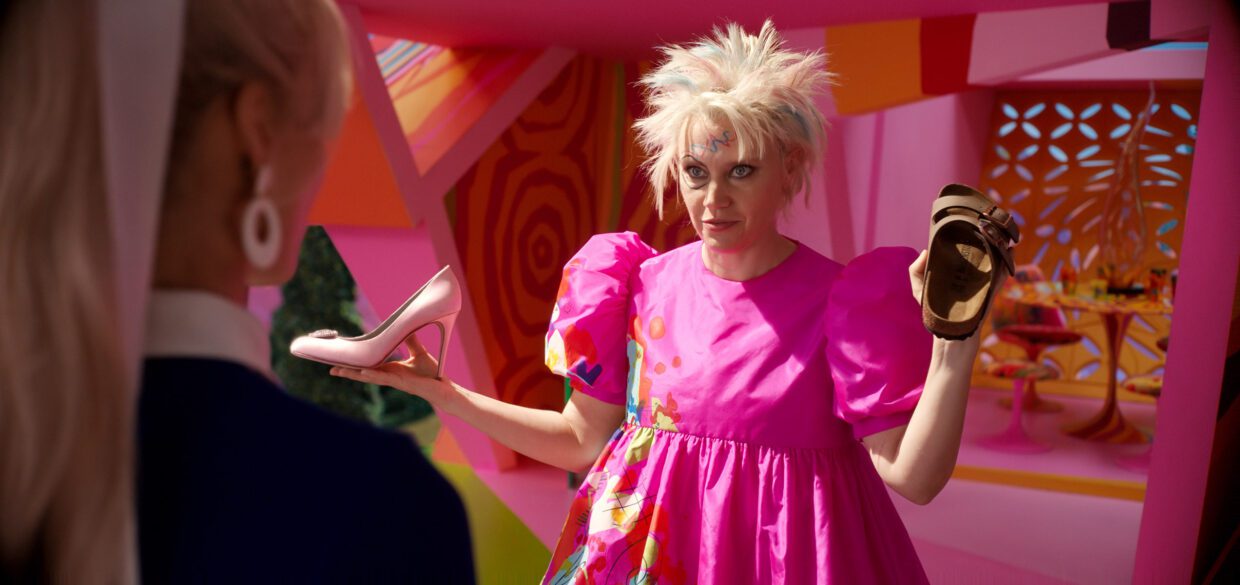
How did you figure out which shade of blonde would work best for Margot Robbie’s Barbie and Ryan Gosling’s Ken? They both sport such very different blondes with Gosling being more on the platinum end of the spectrum.
Primorac: Before Margot arrived into our studio for the testing process, before the physical production actually started, I made some prototypes for her and I made them in the Barbie yellow [hair] color. It was very, very clear straight away that it was not the right color because it didn’t go with all the different pinks and then it didn’t go with the sunkissed peachy skin that looks the best on Margot. So we had to find the blonde that would match all of those kinds of points. We found the blonde that was great for her and we wanted to make it a bit more realistic with a bit of a root, so it didn’t look completely flat and doll-like. It sort of had that three-dimensional look that would look prettier on Margot. And so as the pinks and different outfits were coming out, we often had to tone the hair to fit the outfit because a little bit of magenta in the outfit would throw off her hair.
Then once we set Margot’s look, Ryan arrived and we tested quite a few different blondes on him, and skin colors and skin tones. He completely drove the design of his Ken. We always knew it was never going to be too much because he was in charge and he knew what he wanted to play with. But I couldn’t imagine that platinum [hair] would be acceptable and now it is the most normal thing. Every time I see a picture of Ryan’s Ken in the press, I just think he’s the most beautiful — like how a kid would imagine [him] in their head. He’s the most beautiful Ken with his classic hair and his bronzed look.
It did take a while and once we designed his look, then we put them together. We had to match them a little bit because it was very important in each shot that the hair didn’t jar together and the skin tone didn’t jar together. So there were quite a few adjustments there to be made. It was a lengthy process altogether, but made so much easier by both actors just having the idea to push it to the limits when playing these characters, who no one knew how to do. That was amazingly brave from both of them and they were leading us, all of us, through, so we could just help them achieve that.
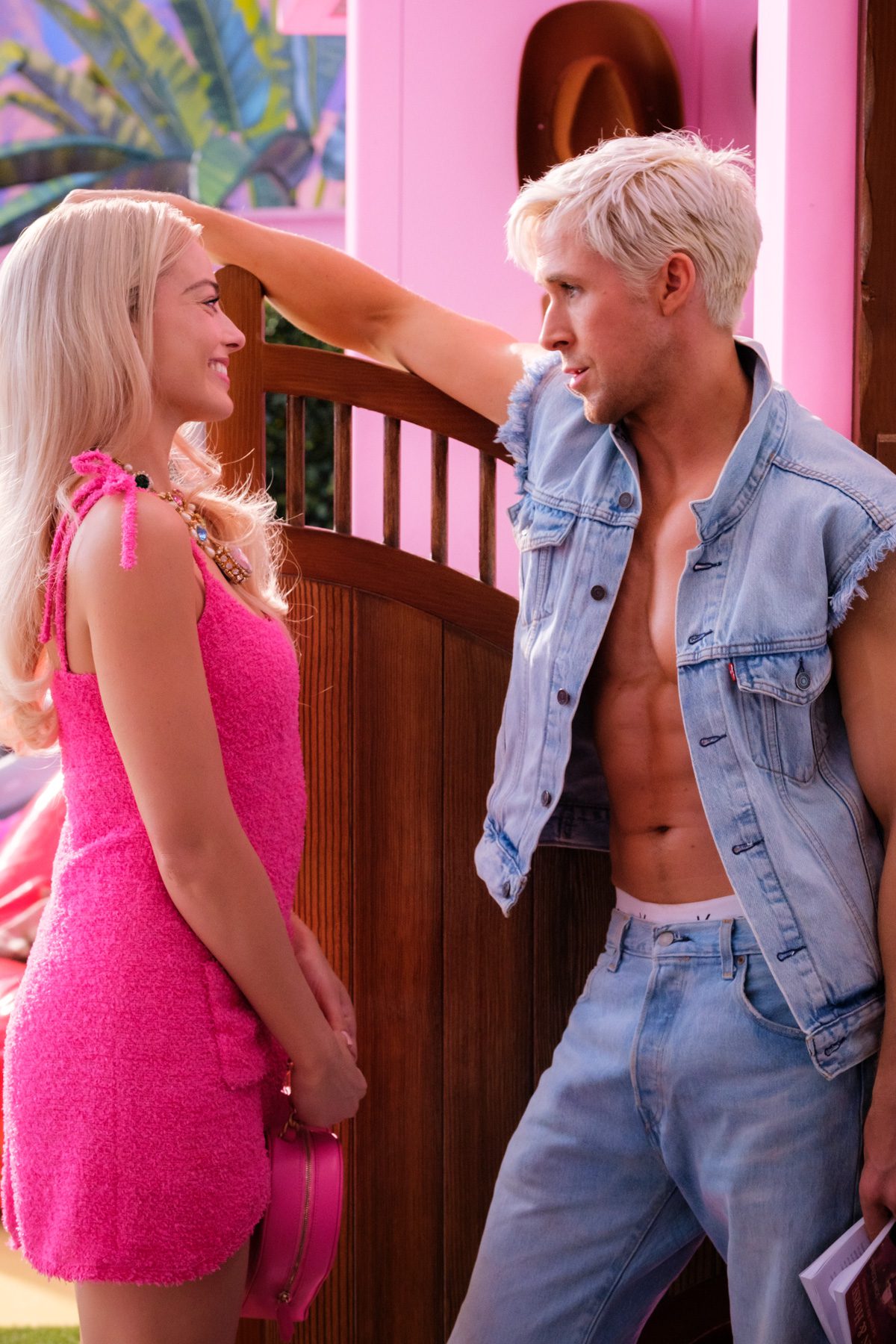
Margot Robbie wears a range of wigs throughout the film. Exactly how many wigs did you and the team create for her?
Primorac: There were something like 18 different wigs and about 30 hairpieces because of the sheer volume of hair on her shoulders and having to do all the changes between different outfits and shots. That was the best decision to make because we could then change the looks from short to long and all of those kinds of things. We could also then tone [the wigs] and we could have more control over what was required.
How long was she typically spending in the chair for all of her wig and hair applications?
Primorac: Margot was, first and most of all, a producer of the film so she was always working in the chair. She would come in the morning and she would be working. She did a lot of prep in the evening at home so she wouldn’t take time in the chair. All of the skincare and everything that she had to do for us, she would do at home which was always taking time away from her sleep and everything. When she would turn up in the morning, she would be working and well, I had to help with the speed of application and everything. I thought if it can be done in the theater, we have to be able to do it here too. So I practiced and we double-teamed with some of my colleagues on certain applications, like the body makeup, and then a lot of the finishes would be done at the same time. And we got it down to an hour and a quarter. Then right towards the end of the schedule, we actually got it down to an hour, because we just had to.
Margot had meetings in the morning and she would talk to all the heads of departments. She would be involved in all the prop meetings and everything else in the movie that creative producers should be involved with. She was everywhere. So the time in the chair was always a working hour. We literally practiced and mapped out the whole process. We had these special-made trolleys that had her hair stuff in one and body stuff in the other and we would wheel them around her and move around the processes so we could be the most [efficient] — a bit like Formula One in the pitstop. That was my inspiration. You have to know what you’re gonna pick up at each moment so it [takes] an hour or an hour and a quarter. And then, as you can imagine, she had to get dressed, so it had to be the most efficient for her because she was a producer and then a Barbie.
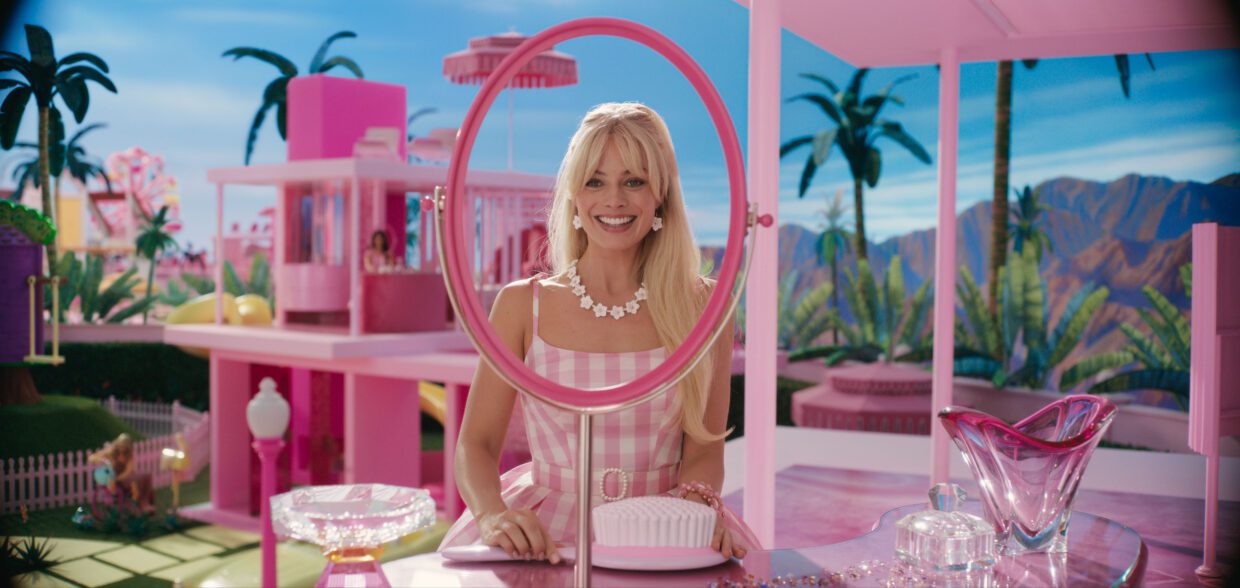
I’m sure having a great team beside you was very important in making sure that all those processes ran smoothly. Can you talk to me about how you assembled your team for this film? I noticed that a lot of the cast had their own personal hair and makeup artists to work with.
Primorac: I’m very, very lucky to have had this team for a while. We started talking about this [film] while we were still on another movie. I thought that we could possibly have one person do two Barbies or two Kens and then once we started designing for them, it became very obvious that would never happen. So I assembled the best team for each person. And there were two or three people on each person and they would have to follow their [Barbie or Ken] around all day and help them stay cool, in their character, and looking great. So it was a huge makeup and hair team. And as we were testing and fitting different outfits, they would have to walk off set and then go through another process of fitting and finding more looks and then we would have to photograph it and send it to Greta to kind of pre-plan the next section. It was an assembly line of creativity all the way through.
Going back to Margot’s Barbie and Ryan’s Ken, how did you develop their hair looks over the course of the film to reflect their developing character arcs?
Primorac: Once we found their basic looks, we could then concentrate on telling the story. With Margot’s Barbie arc, I really wanted to have her face flat on the floor with no makeup on, looking what she thinks is very ugly. Of course, that’s such a fun and poignant moment and an important moment for everyone to kind of love. She’s not ugly. She’s amazing, but she’s not Barbie anymore. So as she was changing and realizing things, we didn’t do all the body makeup. We didn’t do all the makeup on her face. We changed everything to become more human and the hair amount [decreased to] the completely normal hair that Margot has. By the end [of the film], she’s just a girl. And that sort of slight change was kind of delicate and light, but I think it was worth doing because it was kind of obvious. You realize that she’s just as beautiful and that is the point of the film. Individuality is the point of the film.
Of course, with Ryan, we used just all of his ideas, with the amazing costumes that he piled on and the bandanas. He would become more masculine with his beard growth and his roots in his hair slightly becoming more mature. And then piling on two sunglasses and having all his watches on—they were all his ideas. You know, he’s a storyteller. Through all of the imaginable tools and possibilities, he literally used everything to portray [his character’s] arc. To me, he became just funnier and funnier, portraying what we think is funny and real in realizing that there’s a man on a horse with a sword everywhere in the real world. I mean, that is one of the funniest, cleverest ideas. He thought, that’s great—we’ll do that; we’ll go back to Barbie Land and we’ll put a lot of horses around. And it’s so simple, but endearing and lovely and funny and true. That’s why I think this film is so clever. Because of these wonderful actors and directors and writers, it is really clever.
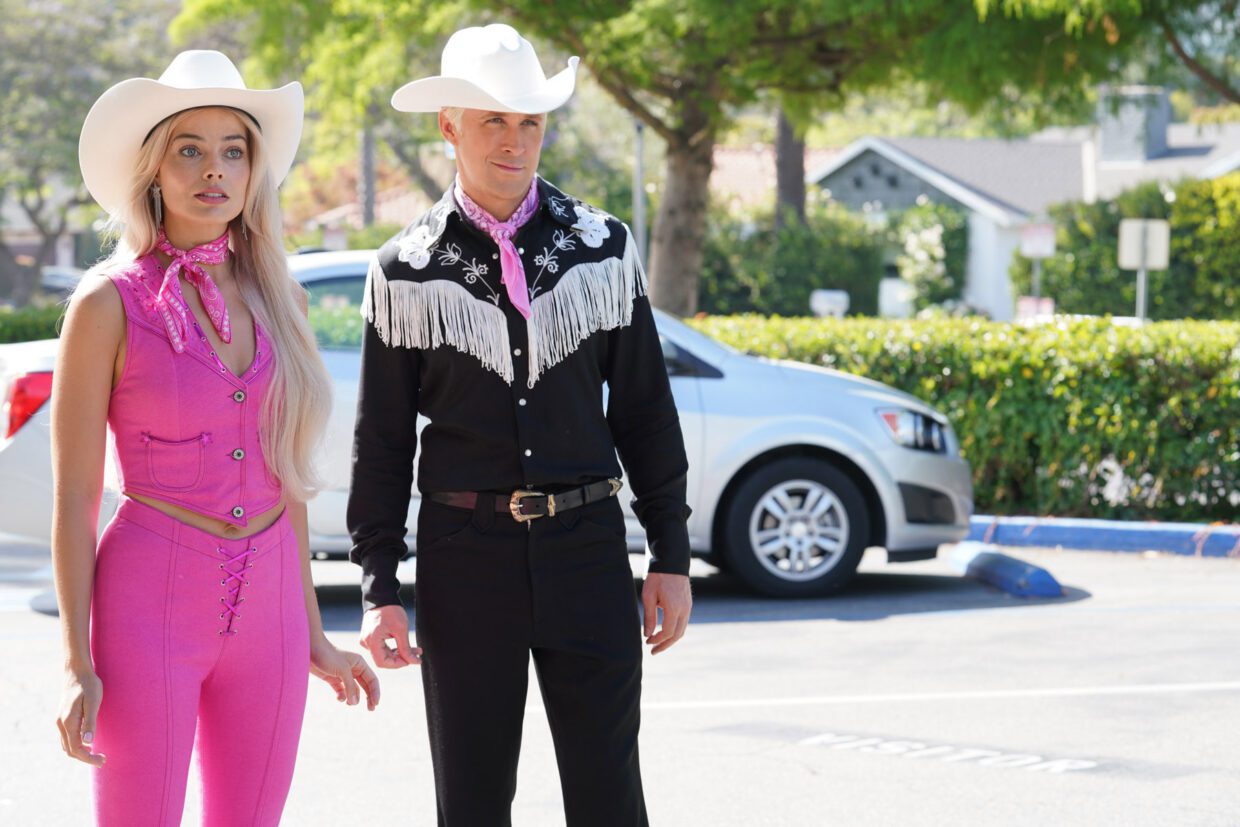
Lastly, what was your favorite look from the film or the one that you had the most fun designing for?
Primorac: Because we were doing fittings all the way through—and this really did happen—we would fit another [look] and we would film a sequence and then suddenly, we’d go, “Oh, next Wednesday, we do this sequence so we better have a fitting for that.” So we’d find the time and we’d fit everything and then we always thought, this is my favorite. Or, this is my favorite—it looks great. And it was always so exciting that we could find something new and different for each section. After about three or four of those, we decided that’s strange. We think every single look is the best, which is great, because that means that we really like them. And then once you film that section, you get bored of it and then you get another one. So it was always exciting and creative.
For me, I think I really liked the ending “real world” traveling look—the fluorescent, rollerblading look. But the pink cowgirl outfit with the white hat and all that mass of hair, that was really difficult to find as well because everything was slightly fashionable. I think it was so simple and always doll-like through all of those action scenes and running around and everything. She just looked heightened enough and strange enough sitting on that bench in that wonderful scene with [costume designer] Ann Roth. You know, that was strange enough, but wonderful enough to tell that story. I thought that was my favorite look.
This interview has been edited for length and clarity.
For the latest news regarding the Barbie movie, make sure to follow @barbiethemovie on Instagram.
